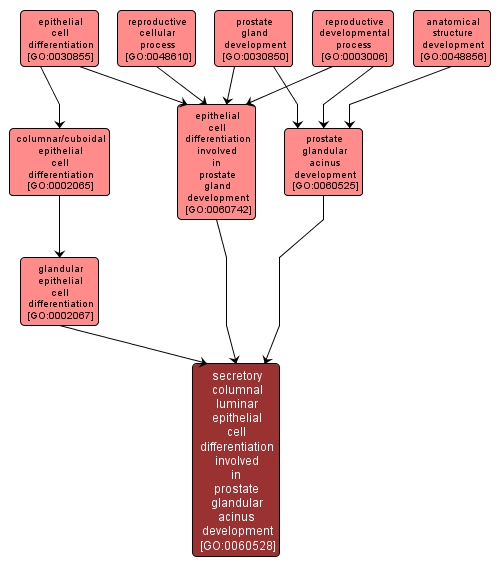GO TERM SUMMARY
|
| Name: |
secretory columnal luminar epithelial cell differentiation involved in prostate glandular acinus development |
| Acc: |
GO:0060528 |
| Aspect: |
Biological Process |
| Desc: |
The process whereby a relatively unspecialized epithelial cell acquires specialized features of a secretory columnal luminar epithelial cell of the prostate. |
|

|
INTERACTIVE GO GRAPH
|














